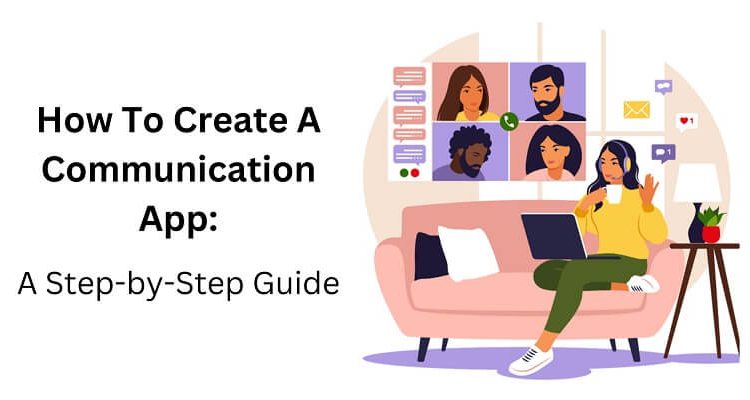Creating Your Dream Communication App: A Step-by-Step Guide

Looking to create your own communication app? This step-by-step guide will walk you through the process, from brainstorming ideas to launching your app.
Communication has always been an essential aspect of human civilization. Over the years, technological advancements have revolutionized the way we communicate. Enter the world of communication apps, which have become a vital tool for personal and professional interactions. Whether you’re looking to stay connected with family and friends or want to enhance teamwork and collaboration in your business, the right communication app can make a difference. If you’re thinking of creating your own, you’re in the right place.
1. Define the Purpose of Your App
Before diving into the development process, you must clarify the intent behind your communication app. Are you aiming to enhance team collaboration, or do you want to connect with a broader audience?
- Personal Communication: If you wish to create an app for personal interactions, consider integrating features like video calls, voice chats, and instant messaging.
- Professional Communication: For businesses, the app might need to incorporate tools for document sharing, collaborative editing, and calendar integrations.
2. Choose a Platform
There are several platforms to choose from when designing your communication app. You could opt for iOS, Android, or even a web-based application. Your choice will depend on your target audience. For instance, if you aim to reach a global audience, an Android app may be more suitable as Android has a larger market share worldwide. However, if your audience is predominantly in a region where iOS devices are more popular, then an iOS app might be the way to go.
3. Understand Your Audience
A successful communication app caters to the needs and preferences of its users. Conduct surveys or engage in conversations to understand the specific features and tools that your potential users would appreciate. This step will provide insights into designing an app that truly resonates with its audience.
4. Consider Security and Privacy
Given the sensitive nature of communications, security should be a top priority. Ensure that the messages, files, and other data exchanged on your app are encrypted. Additionally, assure your users that their personal data is protected and won’t be sold or shared without their consent. Also, consider getting a communication patent so that no competitor can steal your app after it is released in the market.
5. Design a User-friendly Interface
The success of communication apps often hinges on their usability. Design an intuitive interface that even non-tech-savvy users can navigate with ease. Use clear icons, straightforward menus, and avoid overcrowding the app with too many features that could confuse users.
6. Incorporate Essential Features
While the features of your communication app will largely depend on its purpose, here are some fundamental ones to consider:
- Instant Messaging: Allow users to exchange text messages in real-time.
- Voice and Video Calls: Enhance personal connections with audio and visual interactions.
- Group Chats: Provide options for multi-user conversations.
- Media Sharing: Let users share images, videos, and other files.
- Push Notifications: Keep users informed about new messages or updates.
7. Opt for a No-Code Solution
For those who lack technical coding skills or simply want a quicker development process, platforms like Fliplet offer an ideal solution. A no-code app builder like this enables you to rapidly create a communication app that helps boost productivity within your organization. By using such platforms, you can cut down on development time, cost, and deploy your app to the market much faster.
8. Test Your App
Before officially launching your communication app, it’s essential to put it through rigorous testing. This process will help identify bugs, usability issues, and areas of improvement. Consider beta-testing your app with a select group of users and gather feedback to enhance its functionality.
9. Launch and Promote
Once you’re confident about the performance and functionality of your communication app, it’s time to introduce it to the world. Use social media, press releases, and other promotional strategies to reach your target audience. Remember to highlight the unique features and benefits of your app to attract potential users.
10. Seek Feedback and Improve
The journey doesn’t end with the launch. Continuously seek feedback from your users and be ready to make adjustments. This iterative process will ensure that your app remains relevant and caters to the evolving needs of its users.
Conclusion
Creating a communication app tailored to the needs of your audience is not just a technical challenge but also an exercise in understanding human interactions. By prioritizing usability, security, and continuous improvement, you can develop a communication solution that stands out in the competitive market of communication apps. Whether for personal or professional use, a well-designed communication app can bridge gaps, connect people, and pave the way for stronger relationships.

